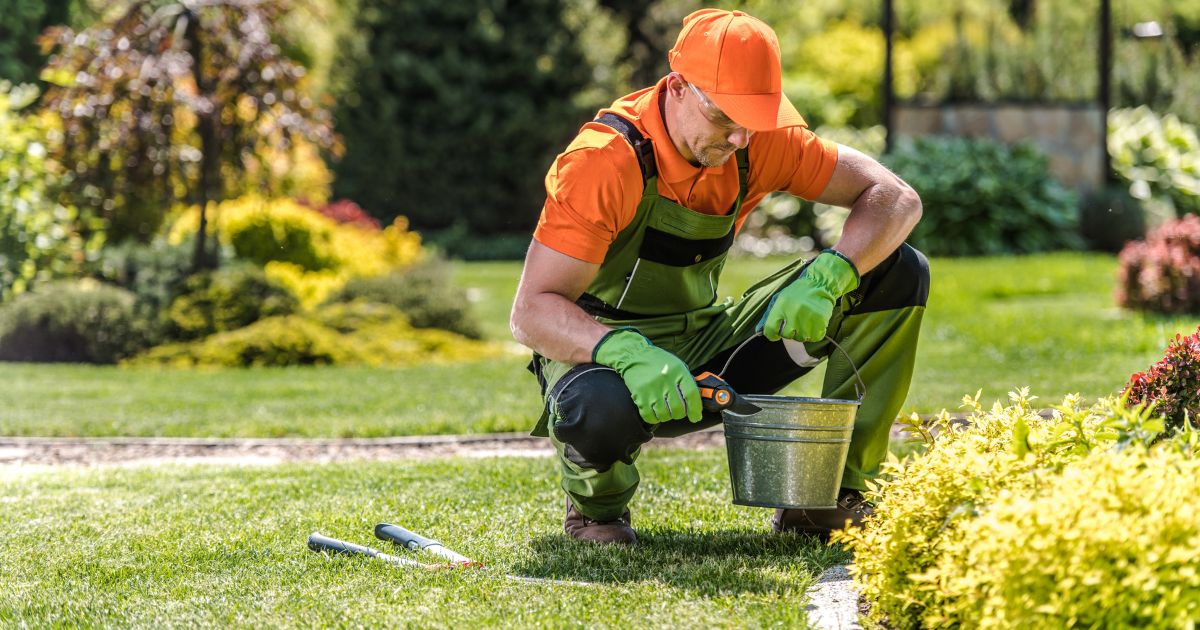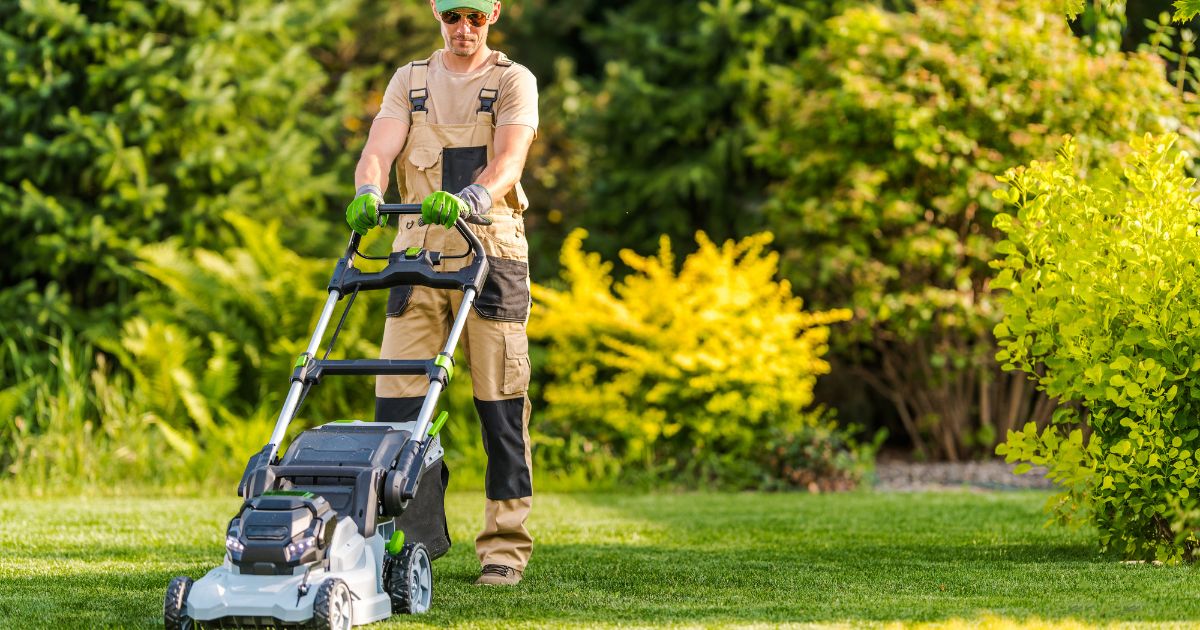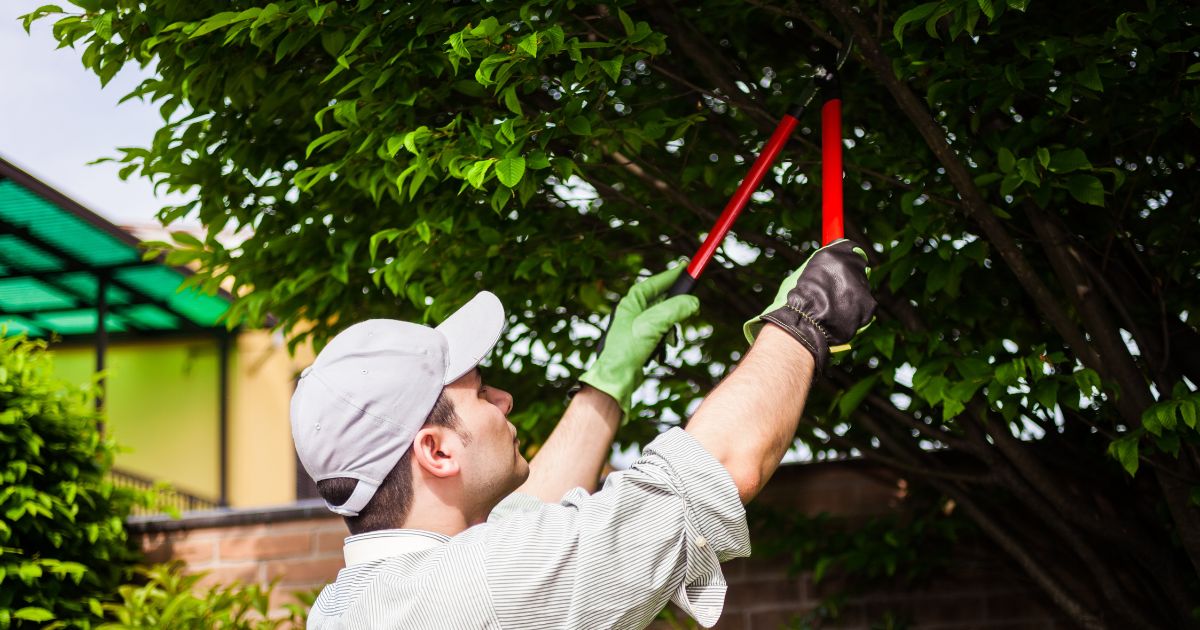
Step into the whimsical world of landscaping, where nature’s canvas becomes a playground of beauty and wonder! With a sprinkle of creativity and a dash of green magic, landscaping transforms dull outdoor spaces into captivating realms of enchantment. From the dance of plants to the harmonious symphony of hardscaping, this delightful art form brings joy and functionality to both humble abodes and bustling businesses alike.
The average cost for landscaping varies depending on the scope and complexity of the project, as well as factors such as the size of the area, desired features, materials used, and location. On average, homeowners can expect to spend between $5,000 and $15,000 for a standard landscaping project. However, it’s important to obtain multiple quotes and discuss specific details with landscapers to get a more accurate estimate tailored to your project.
Definition of Landscaping
Landscaping refers to the art of modifying or arranging the natural features of a particular area in order to enhance its aesthetic appeal. This includes changing the contours of the land, adding ornamental features such as plants and flowers, installing hardscaping elements like patios or retaining walls, and adjusting drainage patterns to improve functionality while minimizing environmental impact.
Importance of Landscaping
There are many benefits associated with professional landscaping services. One major benefit is improved curb appeal, which can increase property value by up to 20%.
Landscaping also enhances privacy by creating natural barriers between adjacent properties. Additionally, it can help reduce noise levels from surrounding traffic while improving air quality by removing pollutants through plant photosynthesis.
Another important benefit is environmental conservation; properly designed landscapes can reduce water runoff by capturing rainwater which would otherwise carry pollutants into nearby waterways. Furthermore, research has shown that spending time outdoors in green spaces has numerous health benefits, including reduced stress levels, improved mood and cognitive function, and increased physical activity levels leading to better overall physical health.
Average Cost For Landscaping: Factors that Affect the Cost
Landscaping projects can range from simple lawn maintenance to intricate garden designs. The cost of any landscaping project will be affected by several factors, including the size and complexity of the project, the type of materials used, labor costs and expertise required, as well as location and accessibility.
Size and Complexity of the Project
The size and complexity of a landscaping project will play a major role in determining its cost. Creating a small garden with a few plants or shrubs may only require minimal labor and materials, resulting in lower costs compared to designing an elaborate outdoor living space or installing an inground swimming pool.
Moreover, larger projects require more resources such as time, equipment, tools, and supplies which also add up to increase their overall cost. Additionally, more complex projects that require custom designs or intricate installation processes may also require specialized expertise from professionals who are experienced in handling such tasks.
RELATED: The Ultimate Guide On How to Become a Licensed Landscaper in Texas
Type of Materials Used
The materials used during a landscaping project will also influence its overall cost. For instance, high-quality plants or trees may be more expensive than those that are readily available at local nurseries.
Similarly, using natural stone for patios or walkways may be more costly than using pavers or concrete. In addition to plant selection and hardscaping, elements like walls or water features can add up significantly, especially if they need to be imported from other regions or countries.
Labor Costs and Expertise Required
The amount of labor needed for any landscaping project is another consideration that can impact its cost. Typically landscapers charge by hour when working on any given task on your property, so it’s important for homeowners to establish clear guidelines on what work needs doing beforehand. Furthermore, specialized knowledge is often required for certain tasks like irrigation system installation, which involves technical knowledge about plumbing systems design, electrical, and drainage, which comes at a premium cost.
Location and Accessibility
The location of the job site as well as accessibility, can also affect the cost of any landscaping project. Job sites that are in remote or hard-to-reach areas may require additional transportation costs for equipment and materials.
Work on steep hillsides or uneven terrains also presents more challenges that will require more labor or machinery. Furthermore, projects located in regions with climatic extremes (frosty winters or hot summers) usually require special care techniques that could increase overall costs due to the specialized knowledge required for such areas.
Homeowners should consider these factors when planning their landscaping projects to ensure they budget accordingly. By having a clear understanding of what it takes to complete each task, homeowners can make wise decisions about which projects they wish to undertake themselves and which ones they’ll need professional help on.

Average Cost for Different Types of Landscaping Projects
Landscaping projects can vary greatly in cost depending on the type and complexity of the project. The following are some average cost ranges for different types of landscaping projects.
Basic Lawn Care and Maintenance
Maintaining a healthy lawn requires regular mowing, trimming, and edging. In addition, fertilization and weed control are important to keep your lawn looking its best. The average cost range for basic lawn care and maintenance is between $100-$200 per visit.
The cost can vary depending on the size of your lawn, the frequency of service, and the type of equipment used. Hiring a professional landscaper may be more expensive than doing it yourself, but it can save you time and ensure that your lawn is properly maintained.
Garden Design and Installation
Gardens can add beauty and value to your home. When designing a garden, plant selection and placement are crucial factors to consider. Hardscaping elements such as patios or walkways can also enhance the overall look of your garden.
The average cost range for garden design and installation is between $4,000-$6,000 for a small-sized garden. However, costs can increase significantly if you have a larger garden or want more elaborate hardscaping features.
Tree Care Services
Trees are an integral part of any landscape design but require proper care to stay healthy. Tree trimming helps maintain their shape while preventing damage from falling branches during storms or high winds. In contrast, tree removal may be necessary if they pose a safety risk or have died due to disease or damage.
The average cost range for tree trimming is between $250-$500 per tree, depending on its size and location. Tree removal is more expensive, ranging from $500-$1,000 per tree.

Sprinkler System Installation or Repair
A sprinkler system ensures that your lawn and garden receive the proper amount of water to stay healthy. If you need a new system installed or repairs made to an existing one, the cost can vary depending on the size of your property and the complexity of the system.
The average cost range for installation is between $1,800-$3,500. Repairs can be less expensive, ranging from $100-$500, depending on the issue.
Do-It-Yourself Tips
One of the best ways to save money on landscaping is to do some of the work yourself. Here are a few tips for DIY landscaping:
1. Start with a plan: Before you begin any work, make sure you have a clear plan in place. This will help you avoid costly mistakes and ensure that your end result is what you envisioned.
2. Research plants: Do your research before purchasing plants for your landscape design. Look for plants that are native to your area and require less maintenance.
3. Invest in tools: Investing in good quality tools can help you save money in the long run by avoiding costly equipment rentals or replacements.
4. Recycle materials: Consider using recycled materials like old bricks or stones as edging or accents in your landscape design.
The Benefits of DIY Landscaping
There are numerous benefits to doing DIY landscaping beyond just cost savings. For one, it allows you to take control of your property and create a space that truly reflects your personality and style. Additionally, it’s a great way to get exercise and spend time outdoors with friends and family.
Cost-Saving Ideas When Hiring a Professional Landscaper
If taking on a DIY landscaping project isn’t feasible, hiring a professional landscaper is another option. Here are some cost-saving ideas when working with professionals:
1. Get multiple quotes: Always get multiple quotes from different landscapers before choosing one to work with.
2. Choose simple designs: More complex designs often come with higher costs due to increased labor requirements and materials needed.
3. Prioritize needs over wants: Determine which parts of your project are necessities and which are wants, and prioritize accordingly.
4. Work with the landscaper to find cost-saving options: A professional landscaper can offer valuable advice on ways to save money while still achieving your desired outcome.
When to Hire a Professional Landscaper
While DIY landscaping may be appealing, there are some situations where it’s best to hire a professional landscaper. For example, if you have a large or complex project that requires specialized knowledge or equipment, hiring a professional is likely the most efficient and cost-effective option. There are many ways to save money on landscaping projects without sacrificing quality.
Whether you choose to do some of the work yourself or work with a professional landscaper, it’s important to have a clear plan in place and consider all options before making decisions. By doing so, you can create a beautiful outdoor space that fits within your budget.
RELATED: Do You Have to Be Licensed to Be a Landscaper in Texas?
Frequently Asked Questions
What do most landscapers charge per hour?
Most landscapers charge an average of $50 to $100 per hour for their services, although the rates can vary depending on factors such as location, the complexity of the project, and the expertise of the landscaper.
What should you look for when hiring a landscaper?
When hiring a landscaper, it’s important to look for qualities such as experience, a solid portfolio showcasing their previous work, good communication skills, knowledge of plants and design principles, and the ability to understand and meet your specific needs and preferences.
Why hire landscaping services?
Hiring landscaping services can save you time and effort and ensure professional results, as landscapers have the expertise, experience, and resources to transform your outdoor space into a visually appealing and functional landscape that enhances the value and enjoyment of your property.
What are common landscape interview questions?
Common landscape interview questions may include asking about the landscaper’s experience, specific skills and knowledge, design process, familiarity with local regulations and environmental considerations, approach to sustainability, and ability to understand and meet client needs.
What factors do you consider in planning your landscape?
Factors to consider in planning a landscape include the climate and environmental conditions, soil type, available space, desired use of the area, aesthetics and design preferences, maintenance requirements, and budget.
What is the most important thing in landscaping?
The most important thing in landscaping is to create a cohesive and harmonious outdoor space that meets your needs, enhances the overall aesthetics of your property, and integrates well with the surrounding environment. It involves a thoughtful balance of design, functionality, plant selection, and proper maintenance to create a beautiful and sustainable landscape.
Conclusion
Now that we have explored the various factors that affect the cost of landscaping projects, as well as the average cost range for different types of projects, it is clear that there is no one-size-fits-all answer to the question of how much landscaping costs. The size and complexity of your project, materials used, labor costs and expertise required, as well as location and accessibility, all play a role in determining the final cost. By understanding these factors and doing some research upfront, you can better budget for your landscaping project.
Whether you’re looking to maintain a beautiful lawn or create an outdoor oasis with garden design and hardscaping elements such as patios or walkways, it’s important to work within your budget. While larger-scale projects can be costly upfront, investing in professional landscaping services can add value to your property over time.
The Importance of Budgeting for Landscaping Projects
Having a realistic budget in mind before starting any landscaping project is crucial to ensuring its success. Understanding what you can afford will help guide decisions on which materials to use and how much labor you need. It’s important not to skimp on quality when it comes to things like soil or plants – these are investments in the long-term health and beauty of your outdoor space.
When working with a professional landscaper, be sure to communicate your budget constraints clearly from the start so they can tailor their recommendations accordingly. They may have suggestions for ways you can save money without sacrificing quality – for example, by using native plants that require less maintenance or reusing existing materials where possible.
While landscaping costs vary widely depending on several factors such as project complexity and location, through careful planning ahead of time, including researching material prices and considering all available options, homeowners should be able to determine an ideal budget suitable for their needs before hiring a professional landscaper. Budgeting for landscaping projects is an essential step in ensuring that your outdoor space looks beautiful and adds value to your property for years to come.
